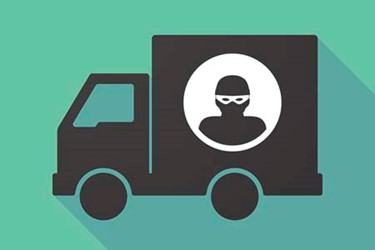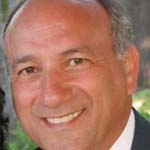Your Supply Chain At Risk: How To Stay Ahead Of The Villains

By Louis Garguilo, Chief Editor, Outsourced Pharma

Your supply chain – raw materials and intermediates, APIs and particularly commercial products – is at serious risk from bad actors. We are talking about falsified or stolen materials, counterfeiting, gray-market diversion, and other nefarious behaviors.
How can you fight back?
Supply chain experts Chirag V. Shah, Director, Global Product Security, Sanofi, and Lee Spach, Director, Global Product & Supply Chain Security, Biogen, offered some advice at Outsourced Pharma Boston.

In this first of two parts, we’ll focus on comments made by Shah, and turn to Spach in part two.
Who Are They? Why Do They Do It?
Guido’s decade-long mission has been to bring awareness of the severity of the challenges, and disseminate best practices throughout the industry.
“Today, criminals engaging in counterfeiting, diversions, and stealing are well funded, and technologically advanced,” says Guido. “ Unlike the predecessors of today’s counterfeiters, we don’t easily uncover their schemes at customs, when there were obvious misspellings or graphics mistakes on a fake label. They’ve become sophisticated, well-organized, and their numbers are increasing because of the incredible reward to risk ratio: high financial reward with relatively very low risk of being detected with the goods.”

“In contrast,” continues Guido, “when you consider how money is traded and handled across the globe, there are more safeguards and verifications than what we apply to our pharmaceutical supplies.”
Moreover, because today drug sponsors – and their CDMOs – work with and source materials more globally than ever before, we have an increasing dilemma on our hands.
“We are interested in new market expansions and sourcing opportunities,” says Guido, “with the frontiers often overseas. We’re crossing more borders; we have to pay more attention to import-export activities and partners. For example, we have finished goods going downstream through so many hand-offs – to wholesalers, distributors, secondary distributors, re-packagers, import-export companies, reverse logistics situations, and others.”
Regulators and customs agents can’t keep up, so “individual best practices, spread throughout the companies who make up our drug industry, is the best thing available to us in terms of protecting supply integrity, and our patients. And that includes the adoption of safeguarding technologies.”
Guido says this isn’t just about implementing today’s highly publicized legal and regulatory focus on serialization for track-and-trace. “Comprehensive brand protection” should also include utilization of big data analytics, commercial data intelligence, and adopting smart technologies to inform us where there may be an anomaly occurring in our supply. Today, that’s the arsenal we have to combat illicit trade.”
Sanofi’s “Global Product Security”
To stop as many of these battles as possible, Sanofi employs a programmatic approach to supply chain security, simply named, “Global Product Security.” According to Chirag V. Shah, Global Product Security Director, this is an “end-to-end view of drug supply chains – from raw materials and API to customer returns of commercial products, and the actual destructions of those goods when needed.”
Shah says Sanofi is constantly on the lookout throughout the supply chain for “counterfeiting, stolen materials, high jacking, product theft, product diversion, and also natural disasters.”
“One way we do this,” he says, “is by conducting thorough audits both internal, and external with our suppliers, distributors, manufacturers and other partners, ensuring they are following security guidelines, best practices, and the principles Sanofi wants followed.”
Sanofi now informs CMOs they will receive “a supply-chain-security audit” as well as the more expected quality audits. “This is eye-opening for a lot of CMOs. Usually the first question is: ‘What do you mean?’”
What Sanofi means is it will specifically audit – perhaps “observe” is a better word – the actual flow of product entering and exiting CMO facilities, with an eye on physical supply security. “We want to know our material is protected, that it is received correctly, stored safely, gets utilized as directed, and then comes back out correctly and protected to the next destination.”
Shah says Sanofi “runs these best practices and guidelines right into our CMO contracts. We’ve started adding a separate security appendix to every contract we write with suppliers and carriers, emphasizing the physical security they need to be following.”
And speaking of following, one key component has been the expanded utilization of GPS devices, and additional monitoring throughout the physical and geographic movement of material and product.
Technology On The Road, And In The Markets
At Outsourced Pharma Boston, Shah spent time discussing this role of “active GPS monitoring.”
“We often inform our carriers they must have GPS in all their tractors and trailers,” he says. “We’ve gone further, by adding covert tracking devices to pallets, drums, and other components of shipments. Should a shipment of our drug product get hijacked from a truck, and then loaded onto the thieves’ own vehicle, as soon as they start to move the goods we can effectively track them and take immediate action.”
Sanofi also receives various global alerts when any type of distribution disruption might be on the horizon. “We’ll receive alerts, for example, on border or customs issues, or there might be some suspicious activity, social instability, or even a fire breaking out in a location. To stay ahead of the curve, we proactively ask: “What would the impact be if this supply were delayed? Do we have any suppliers – or our suppliers’ suppliers – manufacturing at these sites? Can we reroute shipments or deliveries?”
Today, says Shah, avoiding both man-made and natural disruptions should be a fulltime occupation of even the smallest biotech start-up.
Programs For Protection
Sanofi, as well as many other bio/pharma companies, participates in Customs Trade Partnership Against Terrorism (CTPAT), under the U.S. Customs and Border Protection (CBP) organization. This is a voluntary, public-private partnership program. Members receive assistance and benefits for the importing and exporting of materials, in return for addressing “a broad range of security topics, and presenting security profiles with action plans that align security throughout their supply chains.” In Canada, the program operates under the name Partners in Protection (PIP). In Europe, it is the Authorised Economic Operator (AEO), all of which are based on partnerships introduced by the World Customs Organization (WCO).
“It’s kind of like an insurance policy, and another, higher level of security you need to buy into, in order for your supply chain to be safe,” Shah says. In practice, he adds, this “limits the number of touches of – and who can touch – your products.”
And increasingly, in the case of physical security of drug materials and commercial products in 2018, the more insurance you have, the better.
--------
In part two of our reporting from the Outsourced Pharma Boston session on “Lowering Risk To Your Physical Supply Chain,” we’ll hear from Lee Spach, Director, Global Product & Supply Chain Security, Biogen, as well as more from session moderator Ron Guido, President, LifeCare Services LLC.
